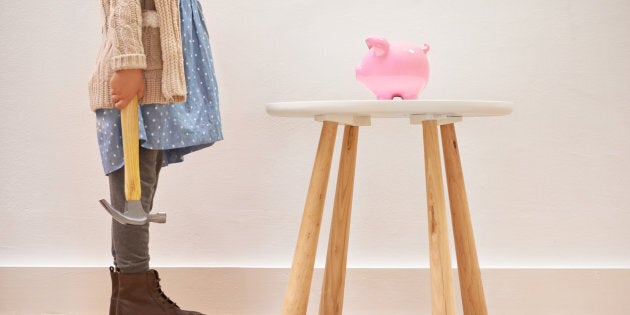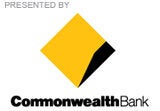

I grew up in a family of six kids. We didn't have a lot, so pocket money was a HUGE deal.
Every week, mum would give us $5 along with the stern warning: "Don't spend it all at once". Of course, this is exactly what we did. We blew that $5 on lollies. We weren't allowed them you see, so spending our pocket money on red frogs was a no brainer.
Our financial education was fairly limited growing up. The concept of saving that $5 for something greater was never really explained. Once that $5 was gone from our hot little hands that was it.
The way money is moved around now is so very different. In a digital world with internet banking, electronic cards and paperless transfers, money is invisible.
Because of this, ensuring my children understand the value of money, how to earn it and how to manage it, is one of my main priorities. I want them to have the confidence to know how to save and when to spend -- not blow it all at once, or be drowning in debt by the age of 25.
I have three children; Maddison, nine, Chad, seven, and four-year-old Rocco. They are not allowed to spend their pocket money on food. That's what mummy and daddy buy, we tell them.
We've seen a lot of homeless people in Melbourne and my son said, "Well, why can't they just go to the bank and get money?" Well, because they don't have a job. You get paid to work, and that's how you earn your money. So I would like them to understand more about how we earn money and why you get money.
Pocket money started when I would occasionally ask them to help me around the house, along with the promise of $2 that I had in my pocket. I soon realised that I needed to start joining the dots between that $2 they had in their hands and the money they would one day see in a bank account.
At around the same time, Maddison and Chad started a program in school called Start Smart.
They both came home one day and were so excited about what they'd learnt about 'needs' and 'wants' and what they should save for and when they could spend.
Maddison really took heed of what she had been taught; you save money for things that need to be paid or saved up to be paid, and then you can spend (a little) money on things that you want. I think it was really important for them to understand that it's not just mummy teaching them about money.
Occasionally they'll say, "Mum, we want to go to the movies every week". I respond with "Well, you can go to the movies, or you can eat this week – there's a need and a want. What would you choose?"
After a few of these conversations, I decided it was time to start a savings whiteboard and then it wasn't long before managing money became serious business in our household.
The kids each establish a goal -- a toy, a book or pencils -- and write it on the board along with how much it will cost. As they do jobs around the house, they see their earnings climb. When they reach that magic number, they can go and buy that special treat.
Each week I put jobs on the board for them to do. Tasks like brushing their teeth and making the bed doesn't earn them any money. Picking up dog poo or vacuuming the room, however, can earn them $1. Everyday they can choose how much or how little they earn.
Over time, we've had to fine-tune each chore a little. At one stage, in a desperate attempt to save, I found the kids following the dogs around waiting to catch a poo. They were under the impression that it was $1 per poo (earning $1 is now a five-poo minimum)!
While they're unable to spend the money on the whiteboard, I occasionally give them physical money for their chores to make sure they understand the connection between the two.
How they spend their money is their choice. I think it's really important for them to understand and learn from their mistakes. That is, if you spend all of your money, it will take a lot longer to get what you're saving for.
One of the most rewarding aspects of them reaching their saving goal is the moment they can buy that item. Learning these important life lessons at school has not only taught my kids how to manage money, it's also reinforced my confidence as a parent to continue teaching them about it at home.
Start Smart is a CommonwealthBank program that teaches primary and secondary students about financial education, empowering them to make wise financial decisions for themselves.